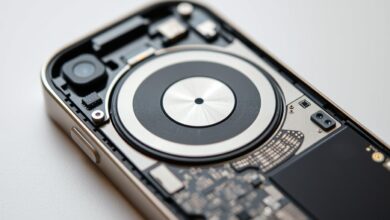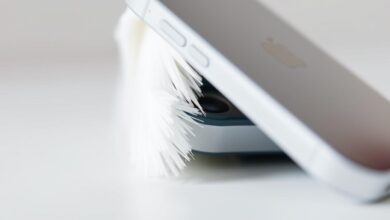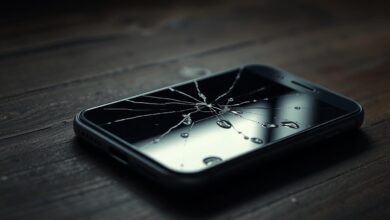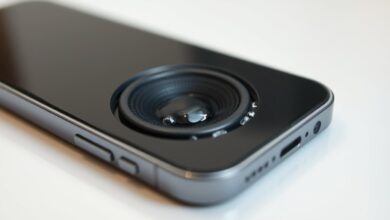how to remove water in phone
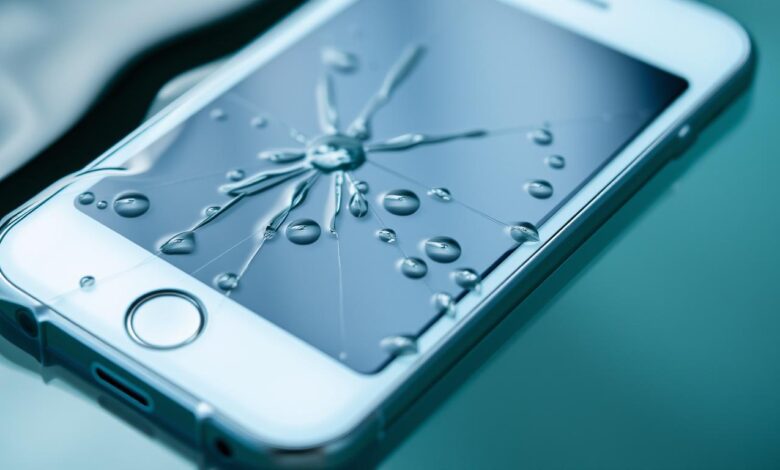
Getting your phone wet can really hurt its performance. It’s key to act fast to avoid serious damage.
I’ll show you how to save your phone from water damage. Knowing the right steps is vital to get your phone working like new again.
By following my advice, you can fix the problem and keep your phone safe from water. I’ll guide you through the water damage repair process, so your phone will be good as new.
Key Takeaways
- Act quickly to minimize water damage
- Understand the right techniques for water removal
- Prevent future water exposure
- Restore your phone to its optimal state
- Navigate the water damage repair process
Understanding Water Damage in Smartphones
It’s important to know how water damage affects smartphones. This damage can happen in many ways, like dropping your phone in water or getting it wet in the rain.
Types of Water Damage
Smartphones can face different kinds of water damage. Here are a few:
- Freshwater damage: This is the most common type, often resulting from accidental drops in sinks or exposure to rain.
- Saltwater damage: More corrosive than freshwater, saltwater can cause significant damage to internal components.
- Contaminated water damage: Exposure to dirty or contaminated water can lead to additional issues due to the presence of debris and chemicals.
How Water Affects Internal Components
Water can really harm a smartphone’s inside parts. When water gets in, it can cause short circuits, corrosion, and damage to sensitive electronics.
| Component | Effect of Water |
|---|---|
| Circuit Board | Short circuits and corrosion can render the device unusable. |
| Battery | Water can cause the battery to corrode, leading to swelling or complete failure. |
| Display | Water can seep into the display, causing damage to the screen or LCD. |
The Critical Timeline for Action
The sooner you act after water exposure, the better your chances of minimizing damage. Quick action can help prevent corrosion and reduce the risk of permanent damage.
Time is of the essence when dealing with water damage. The first few minutes are critical in determining the outcome of your phone’s repair.
By understanding the types of water damage, how water affects internal components, and the critical timeline for action, you can take the necessary steps to address the issue effectively and potentially save your device.
Immediate Actions When Your Phone Gets Wet
When your phone gets wet, acting fast is key. The first few minutes can decide if your phone will work again. Quick and right actions can help find a water in phone solution.
Power Off Your Device Immediately
The first step is to turn off your phone right away. This stops short circuits that could harm your phone’s parts. Don’t turn it on again until it’s safe, to avoid making things worse.
Remove Accessories and External Components
Then, take off any extra parts like phone cases and SIM cards. This lowers the risk of damage to these items. For more help, check out ifixit for detailed steps on fixing water-damaged phones.
Wipe External Moisture
Use a soft cloth to wipe off any water from your phone’s outside. Be gentle to avoid pushing water inside or applying too much pressure. This is a vital step in fixing a water damaged phone.
Remove SIM Card and Memory Card
Removing the SIM card and memory card protects these important parts. It also lets you dry them separately, which helps prevent data loss. Handle these parts carefully to avoid more damage.
By taking these quick steps, you greatly improve your phone’s chances of being fixed. Acting fast and correctly is crucial to minimize damage and get your phone working again.
Common Myths About Fixing Water-Damaged Phones
Fixing a water-damaged phone is often misunderstood. When your phone gets wet, acting fast is key. But, it’s also important to do it right. Many so-called fixes can actually harm your phone more.
The Rice Method: Fact vs. Fiction
One big myth is that rice can dry out your phone. While rice does absorb moisture, it’s not a surefire solution. It can also leave behind dust and starch, which can damage your phone further.
Hairdryers and Heat Sources
Using a hairdryer or other heat source is another myth. Heat can damage your phone by warping parts or pushing moisture inside. Instead, use cool, gentle air to dry it.
Charging a Wet Phone
Charging a wet phone is risky and can cause a short circuit. This can lead to more damage or even a fire. Make sure your phone is completely dry before charging it.
Freezing Your Device
Freezing a wet phone is not a good idea. It can cause condensation inside, leading to more damage. This method is not recommended for phone water removal or drying out a phone.
| Myth | Reality |
|---|---|
| Submerging phone in rice | May not be effective; can leave residue |
| Using hairdryers or heat | Can cause further damage by warping components |
| Charging a wet phone | Dangerous; can cause short circuit or fire |
| Freezing the device | Can cause condensation; not recommended |
Knowing the truth about these myths is key to saving your phone from water damage. By avoiding these mistakes, you can better protect your phone.
Essential Tools for Water Removal
To remove water from your phone, you need the right tools. When your phone gets wet, the right tools can help it recover. Here, I’ll talk about the tools you can use to dry your phone.
Absorbent Materials
Absorbent materials are key for soaking up moisture from your phone. Silica gel packets are great at absorbing moisture. You can also use cotton swabs or soft cloths to dry out your phone’s ports and crevices.
Desiccants and Moisture Absorbers
Desiccants absorb moisture from the air, helping to dry your phone. Silica gel is a common desiccant. Other products like DampRid or moisture-absorbing bags can also work well.
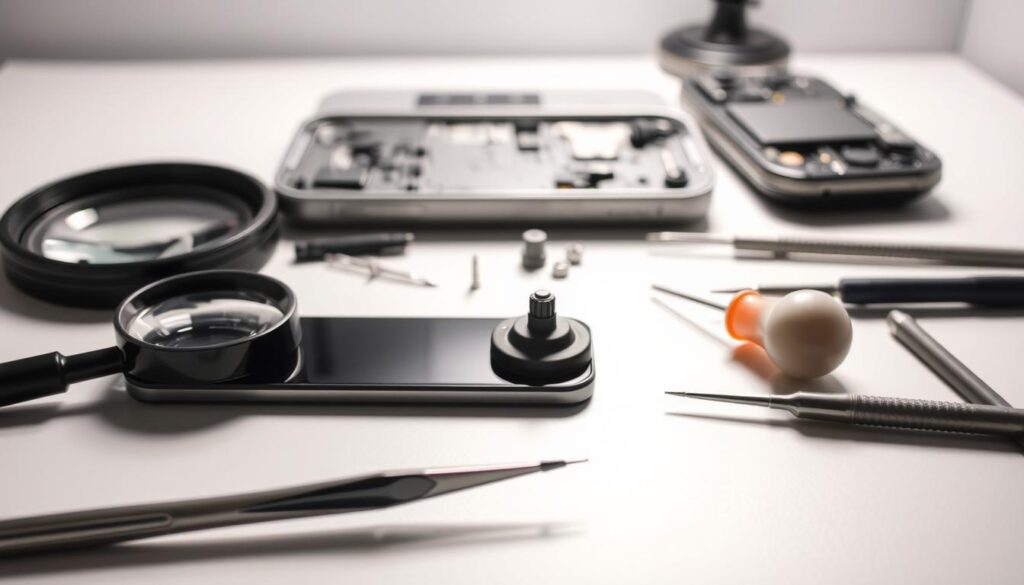
Professional Drying Tools
For serious water damage, you might need professional tools. This includes vacuum chambers or specialized drying equipment. If you’re not sure how to dry your phone, it’s best to get help from a professional.
Household Items That Can Help
Some household items can help dry your phone. For example, uncooked rice can absorb moisture. But, it’s not always the best method. You can also use a desiccant or moisture-absorbing products to dry your phone.
| Tool | Description | Effectiveness |
|---|---|---|
| Silica Gel | Absorbs moisture from the air | High |
| Cotton Swabs | Blots water from ports and crevices | Medium |
| Uncooked Rice | Absorbs moisture | Low to Medium |
| Professional Drying Tools | Specialized equipment for drying | Very High |
Step-by-Step: How to Remove Water in Phone
Removing water from your phone is a detailed process. But, with the right steps, you can help your phone survive. When your phone gets wet, it’s vital to act fast and follow a specific method to reduce damage.
Disassembling Your Phone (If Possible)
If your phone can be taken apart, doing so is crucial. Carefully remove the components to expose the parts that got wet. This might mean taking out the SIM card tray, memory card, and even the casing if it’s removable.
Drying the Exterior and Accessible Parts
Begin by wiping the outside of your phone with a soft cloth to remove moisture. Use a dry cloth or cotton swabs to soak up water from openings like the SIM card slot. This first step helps stop water from getting into the phone’s inside parts.
Using Desiccants Effectively
Desiccants, like silica gel packets, are great at drying out your phone. Place your phone and parts in a container with silica gel packets. Make sure everything is covered, then seal the container. Let it sit for 24 to 48 hours. This method is very good at drying out your phone.
Monitoring the Drying Process
After starting the drying process, keep an eye on your phone. Look for signs of moisture, like water indicators turning red or corrosion. Keep your phone in the desiccant for the full time, and don’t turn it on until it’s dry. Patience is key here, as turning it on too soon can cause more harm.
By following these steps, you can remove water from your phone and maybe save it from damage. The main thing is to act fast and be thorough in your efforts.
iPhone-Specific Water Removal Techniques
Knowing how to remove water from an iPhone is key. If your iPhone gets wet, you need to know how to fix it. This is especially true for accidental water exposure.
Dealing with Water-Resistant iPhone Models
Newer iPhones are made to resist water, but they’re not fully waterproof. If your water-resistant iPhone gets wet, act fast. These devices can handle being underwater for a short time, thanks to their IP68 rating.
Apple says the iPhone 13 and later have better water resistance. But, it’s important to dry them properly to keep this protection.
Using the Water Eject Feature
Some iPhones have a feature to remove water. You can play a sound to push water out of the speakers. Use the Sound Recognition feature or download an app to access this.
Apple’s Official Recommendations
Apple warns against charging a wet iPhone. They suggest tapping it gently to remove water. Then, leave it in a dry place with air to dry.
“To dry your iPhone, tap it gently against your hand with the Lightning or USB-C connector facing down to remove excess liquid. Leave your device in a dry area with some airflow.”
Common Water Entry Points in iPhones
Water can get into iPhones through the charging port, SIM card slot, and speaker grills. Knowing these spots helps you prevent water damage and act fast when it happens.
| Common Entry Points | Preventive Measures |
|---|---|
| Charging Port | Use a waterproof port cover or seal |
| SIM Card Slot | Ensure the SIM card tray is properly sealed |
| Speaker Grills | Avoid exposing your iPhone to heavy rain or submersion |
Learning these water removal techniques can help fix your iPhone after water damage. For professional help with phone water damage repair or water damage phone fix, go to an authorized service provider.
Android Phone Water Removal Methods
Android phones come in many shapes and sizes, making water removal tricky. To dry out an Android phone, you need to know its specific needs. This depends on the phone’s maker and model.
Differences Between Android Manufacturers
Each Android maker designs their phones differently. This affects how you should dry out a water-damaged phone. Some phones are easier to open, helping you get to the wet parts. Knowing these differences is key to fixing your phone.
Samsung Galaxy Water Removal Tips
For Samsung Galaxy phones, there are a few steps to help. First, turn off your phone and take off any extra parts. Then, dry the outside with a soft cloth. If you can, take apart your phone to dry the inside, or use desiccants to soak up moisture.
Also, check if your phone is still under warranty. If it is, you might want to get help from a Samsung service center.
Google Pixel Water Damage Solutions
Google Pixel users should start by turning off their phone and drying it outside. Use Android’s built-in tools to check how bad the damage is. You can also look at Google’s support pages for tips on drying your phone.
Using Android’s Diagnostic Tools
Many Android phones have tools to check for water damage. These tools can show you where the water is. By using these tools, you can figure out how to dry your phone best.
Fixing a water-damaged phone quickly and correctly is important. Knowing your phone’s specific needs can help you dry it out successfully. This way, you can avoid lasting damage.
Advanced Techniques for Water Extraction
Advanced methods are needed to save phones damaged by water. Basic steps work for small spills. But, serious water damage needs a more detailed approach.
Using Isopropyl Alcohol
Isopropyl alcohol is a good way to remove water. It works by pushing water out of the phone’s parts. Make sure the phone is off before using it. Then, soak the phone in isopropyl alcohol carefully.
This method might not work for all phones. Be careful.
“The use of isopropyl alcohol can be an effective method for displacing water, but it should be done with caution and ideally by someone with experience in phone repair.”
Vacuum Method for Water Removal
The vacuum method uses a gentle vacuum to pull out water. It’s important to do this carefully to avoid more damage. Use a low-pressure vacuum to avoid pushing debris further.
Commercial Drying Solutions
Commercial drying products are also effective. They are made to soak up moisture from electronics.
Silica Gel Packets
Silica gel packets are a good choice for drying phones. They soak up moisture from the air and phone parts. Put your phone in a sealed container with several packets.
Leave the phone undisturbed for at least 48 hours to let it dry well.
Dedicated Phone Drying Kits
Dedicated phone drying kits are another option. They come with a sealed container and materials to dry your phone. They are more effective than silica gel alone.
| Drying Method | Effectiveness | Risk Level |
|---|---|---|
| Isopropyl Alcohol | High | Moderate |
| Vacuum Method | Moderate | High |
| Silica Gel Packets | High | Low |
| Dedicated Drying Kits | Very High | Low |
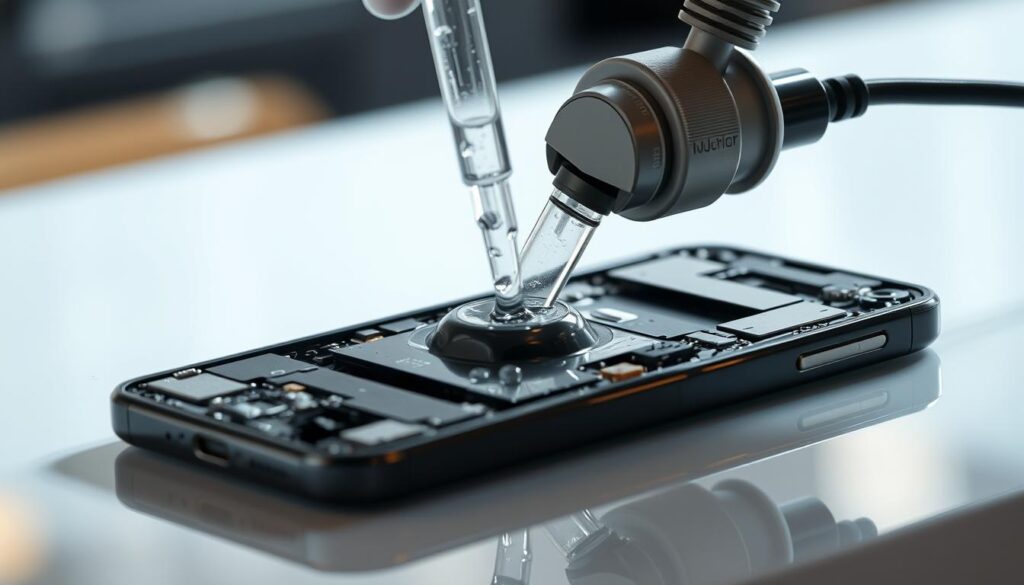
Testing Your Phone After Water Exposure
Testing your phone after it gets wet is very important. You need to check if it works right after trying to dry it. This helps find problems early.
Safe Power-Up Procedures
When you turn on your phone after it got wet, do it carefully. Make sure it’s dry inside and out. If it’s dry, plug it into a charger and see if it turns on.
If it doesn’t start, charge it for 30 minutes before trying again. Or, get a pro to check it first, especially if you’re not sure if it’s dry. For help, visit water damage repair services.
Testing Basic Functions
After turning it on, check if everything works. First, see if the screen responds and displays okay. Then, try calling or playing music to test the sound.
Also, check the speakers, microphone, and headphone jack. Make sure they work right. Test Wi-Fi, Bluetooth, and cellular too. If any of these don’t work, it might mean water damage.
Checking for Residual Moisture
Even if your phone seems fine, check for moisture. Look at the SIM card slot and charging port for water or corrosion. If you see corrosion or mineral buildup, water might still be inside.
Signs That Water Remains Inside
Some signs show if water is still in your phone. Look for corrosion, a foggy camera lens, or water droplets under the screen. If you see these, get help fast to avoid more damage.
By testing your phone carefully and watching for moisture signs, you can fix problems quickly. This might save your phone from more harm.
When to Seek Professional Help
It’s important to know how bad water damage is to your phone. You might try fixing it yourself, but serious damage needs a pro.
Indicators of Severe Water Damage
Some signs show your phone has serious water damage. Look out for:
- Corrosion on the internal components
- Visible signs of water inside the screen or under the display
- Phone not turning on or showing any signs of life after drying
- Functional issues such as distorted sound, unresponsive touch screen, or malfunctioning buttons
If you see these signs, get help from a pro to avoid more damage.
Finding a Reputable Repair Service
When searching for a repair service, keep these tips in mind:
- Check online reviews and ratings
- Ask for recommendations from friends or family
- Verify the service provider’s experience with your phone model
- Check if they offer a warranty on their repairs
Choosing a service like Apple Authorized Service Provider or a well-reviewed local shop is a good idea.
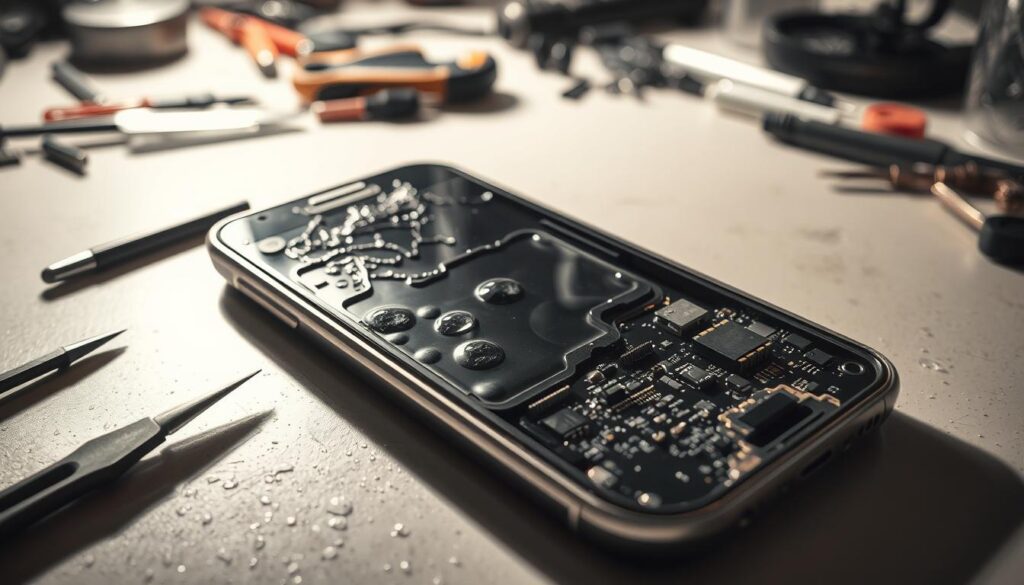
Expected Costs and Timeframes
Repair costs vary based on damage and phone type. Expect to pay $50 to $300 or more. Repair time can be a few hours to several days, depending on the issue and service provider’s workload.
Questions to Ask Repair Technicians
Before giving your phone for repair, ask the technician:
- What is the diagnosis of the problem?
- What parts need to be replaced?
- How long will the repair take?
- Is there a warranty on the repair?
- Can you provide a detailed estimate of the costs?
These questions help you understand the repair process and ensure you’re getting a fair deal for the phone water damage repair.
Insurance and Warranty Considerations
When your phone gets wet, knowing your insurance and warranty is key. Water damage can cost a lot to fix. Knowing what’s covered can save you a lot of money.
Does AppleCare Cover Water Damage?
AppleCare+ covers accidental damage, including water damage, for iPhones. But, it’s important to check the details. There might be limits and a fee for each claim.
Carrier Insurance Policies
Many carriers have insurance for accidental damage, like water damage. Plans can differ a lot. So, it’s important to know what your plan covers, including deductibles and limits.
Third-Party Insurance Options
There are also third-party insurance options for phones. Look for plans that cover water damage. Also, check how well they handle claims.
Documenting Water Damage for Claims
To make a successful insurance claim, you need good documentation. This includes:
- Taking clear photos of the damage
- Keeping records of any repair estimates
- Providing proof of accidental exposure to water
Knowing your insurance and warranty can help a lot with water damage to your phone. Always check the details of your coverage to know what’s included.
Preventing Future Water Damage
Preventing water damage is key. By taking steps ahead of time, you can lower the risk of water damage to your phone.
Waterproof Cases and Accessories
Getting a waterproof case is a smart move. These cases keep your phone dry, even when it’s underwater. You can also find waterproof pouches and bags for extra protection near water.
Water-Resistant Phone Models
Choosing a water-resistant phone is a good idea. Many phones today have IP67 or IP68 ratings. These ratings mean they can handle being underwater.
| IP Rating | Description |
|---|---|
| IP67 | Can withstand being submerged in water up to 1 meter for 30 minutes |
| IP68 | Can withstand being submerged in water beyond 1 meter, with exact conditions specified by the manufacturer |
Behavioral Changes to Protect Your Device
Changing how you act can also help. Stay aware of your surroundings and avoid using your phone near water. It’s also important to be careful in rainy weather or near pools and beaches.
Water Detection Apps and Features
Some phones and accessories have water detection. These features alert you to water exposure. There are also apps that check for moisture in the charging port, adding extra protection.
By taking these steps, you can protect your phone from water damage. These actions not only safeguard your device but also give you peace of mind. Whether you’re near water or just want to be safe, these tips can help keep your phone safe and working well.
Conclusion
Removing water from your phone is urgent and needs the right steps. We’ve covered how to dry your phone and avoid water damage. It’s key to act fast, as water can harm your phone’s inside parts.
To get rid of water, turn off your phone, take off accessories, and use drying materials. For iPhones and Androids, there are special ways to dry them. If you’re not sure about the damage, getting help from a repair service is a good idea.
To avoid water damage in the future, use waterproof cases and be careful with your phone’s water exposure. Knowing how to dry your phone helps keep it working well. For bigger problems, experts in water damage repair can fix your device.
FAQ
How can I tell if my phone has water damage?
Look for corrosion, water spots, or condensation under the screen or in the SIM card slot. Check the Liquid Contact Indicator (LCI) on your device. It changes color when exposed to water.
Can I fix water damage on my phone myself?
Yes, in some cases. You can dry your phone using desiccants, absorbent materials, or professional tools. But, severe damage might need a pro or a new phone.
Is it safe to charge my phone after it’s been exposed to water?
No, it’s not safe. Charging a wet phone can cause short circuits and damage it more. Wait until it’s completely dry before charging.
How long does it take to dry out a phone?
Drying time varies. It depends on how much water was involved and the drying methods. It can take a few hours to several days.
Can I use a hairdryer to dry my phone?
No, using a hairdryer or other heat sources is not recommended. It can damage your phone’s internal components.
What is the best way to remove water from my phone’s charging port?
Use a soft cloth or cotton swab to gently remove water. You can also try using a desiccant or silica gel packets to absorb moisture.
Will my phone’s warranty cover water damage?
It depends on your warranty and insurance policies. Check your warranty terms or contact your carrier to find out.
How can I prevent water damage to my phone in the future?
Use a waterproof case or accessories. Avoid exposing your phone to water. Consider using water detection apps or features to alert you to potential water exposure.
Can I fix water damage on my iPhone or Android phone?
Yes, the steps in this guide work for both iPhone and Android devices. But, some models might have specific requirements or recommendations for water removal.
What are the signs that my phone is still damaged after drying?
Signs include corrosion, water spots, or condensation. Also, look for functional issues like a malfunctioning screen, speaker, or charging port.
